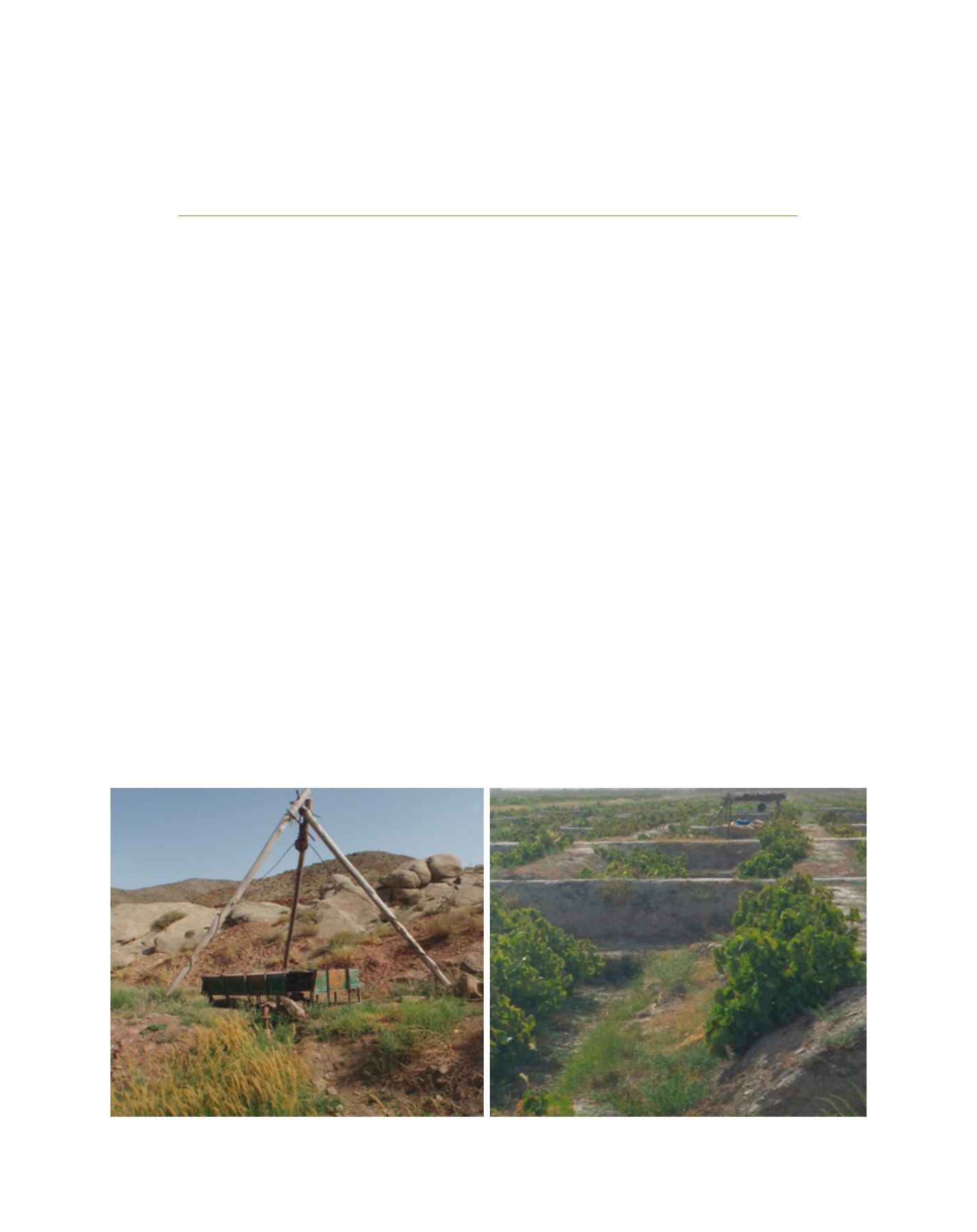

[
] 222
A blueprint for sustainable groundwater
management in Balochistan, Pakistan
Shahbaz Mushtaq, Kathryn Reardon-Smith and Roger Stone, Australian Centre for Sustainable Catchments,
University of Southern Queensland, Australia; and Syed Mohammad Khair, Balochistan
University of Information, Technology, Engineering and Management Sciences, Quetta, Pakistan
T
he challenge for groundwater-dependent countries is to
ensure that the benefits derived from groundwater resources
continue into the future. This requires a policy shift from
groundwater development to long-term groundwater management.
There follows a brief historical overview of groundwater develop-
ment in Balochistan, Pakistan and a proposed blueprint for an
improved groundwater management system in the region.
Pakistan has fertile alluvial floodplains but low and highly variable
rainfall, and is among the most groundwater-dependent countries.
Groundwater development is typically connected with the development
of tube well (groundwater bore) irrigation systems, which have contrib-
uted enormously to increased food production, poverty reduction and
improved sanitary conditions in recent decades.
1
Similar trends are
evident across south Asia, where rapid increases in numbers of tube
wells have driven significant growth in the agriculture sector.
2
While groundwater polices in Pakistan have been highly successful
in enabling increased agricultural production and prosperity, they have
also resulted in massive groundwater drawdown.
3
A range of factors
have contributed to groundwater resource decline, including insuf-
ficient legislation, poor planning and implementation, poor drought
management, lack of institutional capacity and scientific knowledge,
lack of groundwater entitlements, and a government
subsidy for energy.
4
The historical record of policy imple-
mentation in Pakistan, particularly in Balochistan, is
extremely poor. Prolonged political instability and lack of
the required political will further aggravate the situation.
5
The management of groundwater is complex due to
the common-pool nature of the resource.
6
Furthermore,
lack of knowledge about groundwater biophysical
systems, poor understanding of the concept of sustaina-
ble yield, and a lack of monitoring infrastructure (which
seldom exists in Pakistan) makes it hard to develop and
implement effective groundwater allocation and licens-
ing plans. The present circumstances need a solution.
Groundwater development and governance
in Balochistan
Balochistan is one of four provinces of Pakistan and
the biggest in terms of area (347,190 km
2
). Upland
Balochistan is classified as arid in terms of rainfall,
receiving an average rainfall of 200-250 mm annu-
ally. The region is renowned for producing a range
of high-value crops including fruits and vegetables.
W
ater
C
ooperation
, S
ustainability
and
P
overty
E
radication
Tube well irrigation in Balochistan: (left) a newly installed tube well in a hilly area to irrigate downhill fields, and (right) a vineyard irrigated by traditional tube well
Image: Syed Mohammad Khair


















